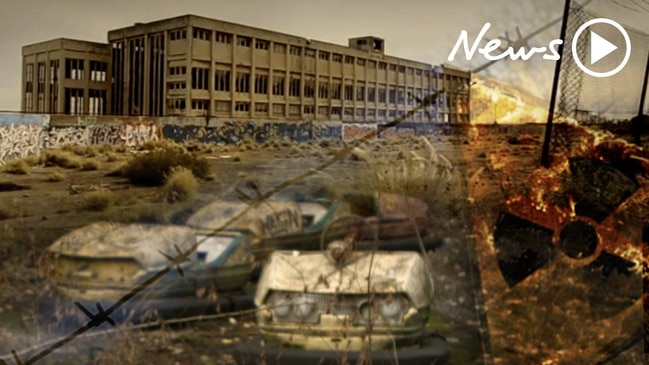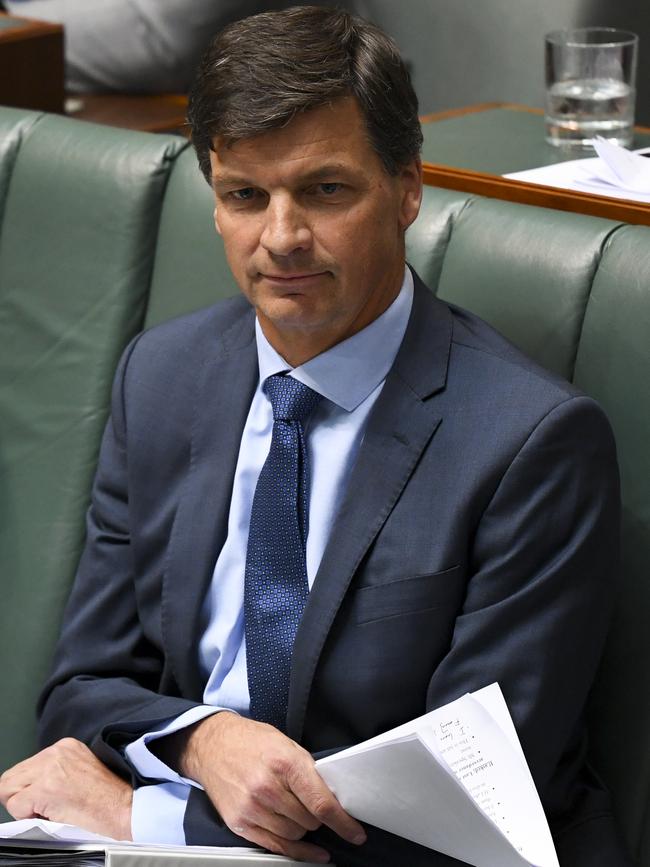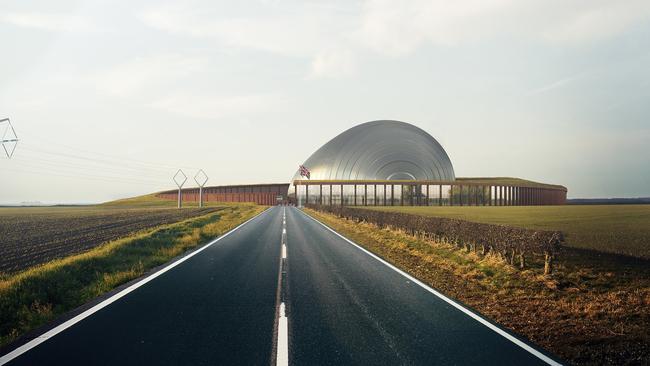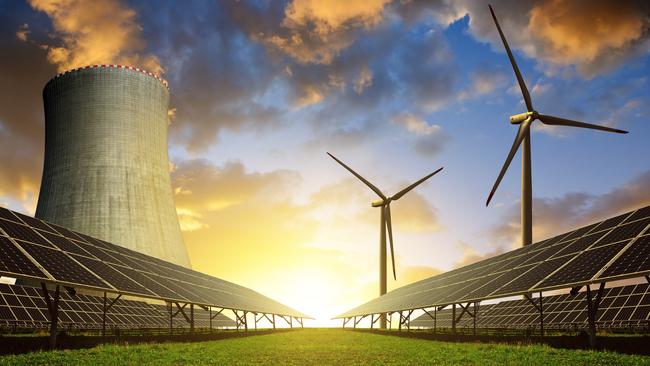Nuclear power inquiry announced, but Federal Government has no plan to lift moratorium
Australia needs cheap, reliable power and lower emissions. But does that mean it needs nuclear? Tory Shepherd reports.

Conversations about the nuclear fuel cycle just seem to go around and around.
You could almost say they’re cyclic.
The Federal Government on Monday announced a parliamentary inquiry into nuclear power.
The Standing Committee on the Environment and Energy has been tasked with the probe and will report by the end of the year.
Energy Minister Angus Taylor said that there was “no plan” to lift the existing moratorium on nuclear power.

“No plan,” he said.
“But over the long term we need to look at these alternative technologies and that’s why we’re doing this.”
Last time Australia took a long hard look at nuclear power, the inquiry found 25 reactors could be in place to supply a third of Australia’s electricity by 2050.
Since then, power prices have rocketed, nuclear and renewables technology has advanced, and calls to transition to low-carbon economy have grown.
We have rapidly ageing coal-fired power plants in Australia.
We’ve also got about a third of the world’s uranium reserves here.
But we’ve been powering ahead on renewables; not just sun and wind, but pumped hydro, too.
There are a number of fronts on this issue that are set to explode; safety, affordability and reliability, and environmental concerns.
Then there’s the possible timeline to a nuclear future, and that includes navigating the politics and the people.
SAFETY
Think nuclear, think Chernobyl? That 1986 accident has been revived through the recent Netflix series of the same name.
It certainly garners more headlines than the hundreds of reactors operating without incident around the world.
Thanks to Chernobyl, and Fukushima, and Blinky the three-eyed fish from the Simpsons, nuclear has a battered reputation.
Those in favour, however, point to the rapidly changing technology and the new small modular reactors under development.
SMRs are built in factories and shipped out, so they’re flexible and cheap.
They can be stand-alone reactors, or clumped together.
So you could have one that produces 50 megawatts; enough to power tens of thousands of homes.
Then you could add more if you need them.
Rolls Royce is advertising a reactor that looks like a sleek, silver slug.
It says it can operate anywhere in the world. Just pop it on the back of a truck. It’s quite a different proposition from the enormous nuclear stacks most people think of.
The Australian Nuclear Association and the International Atomic Energy Agency say the industry is already a relatively safe one, and nuclear proponents say the next-generation reactors will be safer still.
But the “what ifs” remain. What about a terror attack, or unprecedented natural disaster, or human error?

ECONOMIC
Safety aside, is it worth embarking on the long nuclear journey, or will renewables fill the power hole?
There are new pumped hydro schemes afoot, batteries are getting better and cheaper, and solar and wind power are picking up more of the power load.
In 2006 a report on nuclear energy – now known as the Switkowski report – said it would cost up to 50 per cent more than coal or gas to generate nuclear power, but it found that gap would close once governments were forced to bring down emissions.
In 2016 the State Government’s royal commission found nuclear wasn’t commercially viable, but “should be considered as a future low-carbon energy source to contribute to national emissions reduction targets”.
The Grattan Institute’s energy program director Tony Wood told The Conversation that things could change.
“If the cost and reliability in a very high renewables world become problematic and there is significant progress towards commercially viable small scale nuclear reactors, they might be a serious possibility,” he said.
“It therefore makes sense for Australian governments to understand and track these developments if only to keep the option open.”
The Australian Nuclear Association says it will make power cheaper (but then, they would).

ENVIRONMENT
One of the most compelling reasons for nuclear power is to cut carbon emissions.
But while the reactors themselves don’t pollute the air while they’re operating, and while it may be cleaner than fossil fuels, nuclear overall is not entirely innocent.
The Climate Council points out that technically nuclear power is not “renewable” because it relies on digging uranium out of the ground.
And it says that while reactors don’t produce emissions, all the other stages do.
To produce nuclear power you have to mine and enrich uranium, construct reactors and move them around, dispose of the waste, and so on.
Then there’s the question of possible contamination; which takes us back to safety.
TIMELINE
Energy is an urgent issue for the Federal Government, because it is an urgent issue for many voters.
But the SMRs aren’t ready to go yet.
If Australia has a nuclear future, it’s a way off yet.
Let’s say this inquiry recommends reactors. Then the Government would have to take a position.
Then they’d have to build public support, get a national consensus.
It would have to get laws and regulations changed.
Then would come the infrastructure, the choice of what type of reactor, building the workforce.
The Switkowski report said nuclear power could flow within a decade to 15 years. Labor says it would take a couple of decades.
POLITICS
An Essential poll in June found more Australians support nuclear power plants than oppose them, but at 44 per cent to 40 per cent, it’s not a stunning majority. Especially when only one in three people would feel comfortable living close to a nuclear power plant.
Labor is pushing the Federal Government to list possible locations even before the inquiry has begun, presumably to make the point that a reactor will have to be in somebody’s backyard.
Nuclear power is an environmental issue and an economic issue; areas where evidence and cost/benefit analyses should prevail.
But it is also a political and emotional issue, which is why the atom will always split the crowd.

